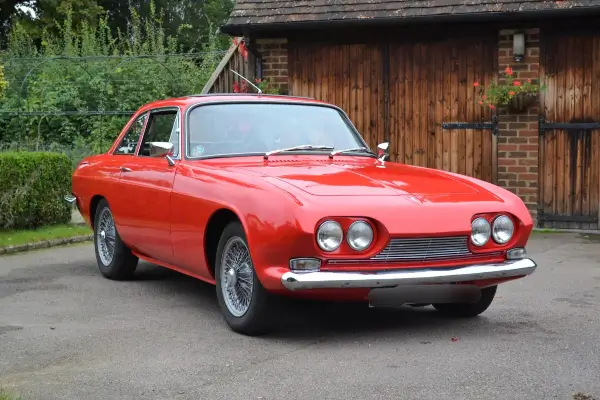Reliant Tyres



Classic Reliant Tyres
On the following pages, Longstone Classic Tyres give classic tyre fitment recommendations for Reliant cars.
If your Reliant is not listed, don't panic! Please give us a call on:
01302 711 123
or
Email: sales@longstonetyres.co.uk
Reliant Tyres
The following list are our recommendations for Reliants:
- 185 HR 14 Michelin MXV-P for a Scimitar GTE & GTC.
- 165-15 Michelin XAS for a 1960's Scimitar & Sabre 6.
- 155 HR 15 PIRELLI CINTURATO CA67 for a Reliant Sabre Four.
Reliant History
When the Raleigh Bicycle Company decided in 1934 to stop producing three-wheeled bikes, its works manager, T. L. Williams, and a colleague, E. S. Thompson chose to make their own car in Williams' back garden on Tamworth's Kettlebrook Road. In January 1935, the prototype was granted a licence. A 356 kg steel-framed van powered by a 600 cc single-cylinder engine that drives the rear wheels via a three-speed transmission and chain drive.
Like other automobiles of the time, the body had a wooden frame with aluminium panels connected to it. It was effectively a motorbike equipped with a box body, with the motorbike front end situated in the open, in front of the bulkhead. The first prototype featured handlebars for steering, but it was soon altered to a steering wheel. The work was relocated to Watling Street in Fazeley. The first Reliant was shipped on June 3, 1935. The driver sat in the centre of the vehicle, sitting atop the engine, and was driven by a single-cylinder air-cooled 600cc engine.

In 1938, the Reliant Motor Company began using the popular Austin Seven's 747 cc four-cylinder side-valve engine. On March 12, 1938, the very first four-cylinder Reliant was constructed. As Williams was always keen on making Reliant as self-sufficient as possible, the Austin Car Company stated its plan to discontinue manufacture of the 747 cc Austin Seven engine.
During WWII, Reliant manufactured components for the allied war effort. Three-wheeler development continued in the post-war years. The Regent was a slightly altered van introduced by Reliant. The first Regent, which looked like an oversized motorbike, was finished on March 13, 1946. The Regent gained a GVW of 10 cwt and improved its equipment, including sliding door windows. The Regent was still being developed alongside the Reliant Regal in 1953. In 1956, the Regent was superseded by the Regal Mk II van.
In 1952, a four-seat automobile was introduced, first with an aluminium body, but as the company's grasp of the material developed and the cost of aluminium climbed, panel by panel, it was replaced with fibreglass. By 1956, the body of the Reliant Regal Mark 3 had been fully replaced with fibreglass. The engine was redesigned by Reliant to produce 17.5 horsepower, a significant improvement over the original Austin design's 7 hp.

After Bond Cars went bankrupt, Reliant purchased the company. Reliant acquired Bond after deciding to join the Triumph dealership market. This partnership was already in place for Bond's Equipe sports vehicle, but when Triumph acquired British Leyland, the pact was terminated. Bond is reported to have been Reliant's major rival in three-wheeled automobiles, with the Bond Minicar and the Bond 875, but Reliant's cars outsold Bond's by a considerable margin, thanks to a considerably bigger manufacturing and dealer network. The Bond moniker was used by Reliant for the 1970s Bond Bug, which was a Reliant prototype initially known as the Reliant Rogue.
The Reliant Kitten was a four-wheeled variant of the 1970s Reliant Robin, planned to replace the Rebel and powered by an 850cc version of Reliant's own engine launched in 1975. The design was largely featured on the Reliant Robin this time, with just the nose of the design differing, with square headlamps and a black panel around them — this was done mostly for cost-saving reasons, so parts from both cars could be utilised for manufacturing.
The famous Reliant Robin has been the subject of a number of myths. The most common misconception about Reliant cars is that they cannot turn around corners. This was allegedly proved on Top Gear, although Jeremy Clarkson revealed in 2016 that the Robin only turned over frequently because the manufacturing crew sabotaged the differential, installed different sized rear wheels, and placed hefty weights in the passenger footwell. As a result, the vehicle became far less stable. Another common misconception is that a vehicle with 3 wheels is not permitted on British highways; this is not true. It is a frequent misunderstanding that Derek "Delboy" Trotter, the main character in Only Fools & Horses, owned a Reliant Robin, however, the Trotters' van was, in actual fact, a Supervan III.
The Hodge Group purchased the bulk of Reliant in 1962 and sold it to the Nash family 15 years later. The owner of Reliant was a prominent home developer in the early 1990s, and when the 1992 crisis came, the firm failed, and Reliant was sold to Beans Engineering. By 1996, Jonathan Haynes had taken the lead and his major backer had taken control - Haynes developed a new variety of Robin and Rialto specifications to appeal to a wider spectrum of buyers, including more luxurious versions like the SLX. Sales more than quadrupled since earlier, most Reliant vehicles were basic, with no choice for metallic paint. The Robin 65, a Reliant Robin in shiny gold, was produced to commemorate 65 years of automotive manufacture. The automobiles included with every available addition and were sold for £10,000 - 65 of these vehicles were constructed up until Valentine's Day 2001.
